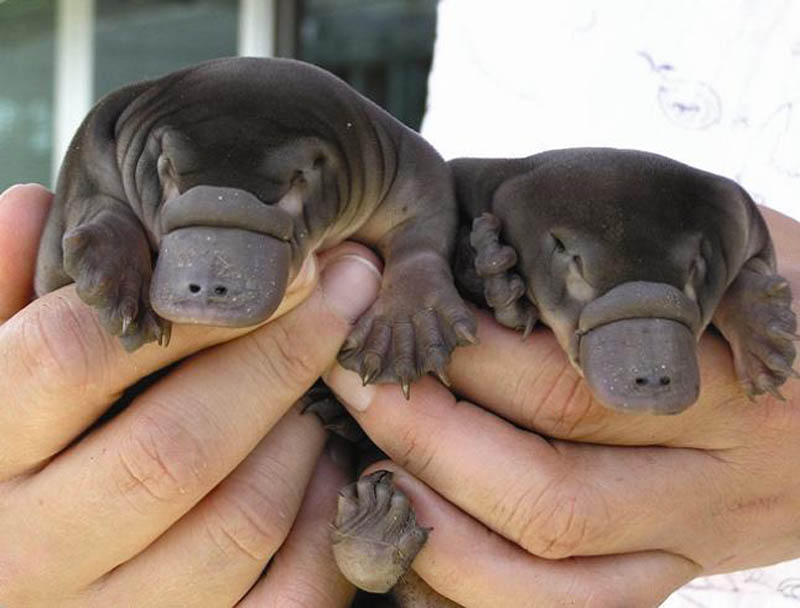
Photograph by Dark Orange
THE PLATYPUS – NATURE’S MUTT
The platypus is best described as a hodgepodge of more familiar species: the duck (bill and webbed feet), beaver (tail), and otter (body and fur). But wait! There’s even more to this fascinating mammal. Did you know that it is venomous, lays eggs, and hunts using electricity?
Check out the sections below to learn more about this evolutionary marvel that can only be found in Eastern Australia
Photograph by TwoWings
VENOMOUS
Did you know platypuses are one of only seven venomous mammals in the world?
While both male and female Platypuses are born with ankle spurs, only the male has spurs (sharp stingers on the heels of their rear feet) which produce a cocktail of venom, composed largely of defensin-like proteins (DLPs), three of which are unique to the Platypus. The defensin proteins are produced by the immune system of the Platypus. Although powerful enough to kill smaller animals such as dogs, the venom is not lethal to humans, but is so excruciating that the victim may be incapacitated
Photograph by Landlearn NSW
REPRODUCTION
Platypus reproduction is nearly unique. It is one of only two mammals (the echidna is the other) that lay eggs. The platypus also lactates but has no nipples.
Females seal themselves inside one of the burrow’s chambers to lay their eggs. A mother typically produces one or two eggs and keeps them warm by holding them between her body and her tail. The eggs hatch in about ten days, but platypus infants are the size of lima beans and totally helpless. Females nurse their young for three to four months until the babies can swim on their own.
The platypus has ten sex chromosomes, which resemble those of birds, but uses genes from mammals and reptiles to fertilize and lay its eggs, which are produced from only one of two ovaries (the left one).
Photograph by Peter Halasz
TERMINOLOGY
Did you know the platypus is the sole living representative of its family (Ornithorhynchidae) and genus (Ornithorhynchus)?
There is also no universally agreed plural of “platypus” in the English language. Scientists generally use “platypuses” or simply “platypus”. Colloquially the term “platypi” is also used for the plural, although this is technically incorrect and a form of pseudo-Latin; the correct Greek plural would be “platypodes”.
Photograph by Martin A. Hansen
SENSITIVITY
Platypuses are one of only two mammals known to have a sense of electroreception. The Platypus feeds by neither sight nor smell, closing its eyes, ears, and nose each time it dives. When it digs in the bottom of streams with its bill, its electroreceptors detect tiny electrical currents generated by muscular contractions of its prey, so enabling it to distinguish between animate and inanimate objects, which continuously stimulate its mechanoreceptors.
Experiments have shown that the Platypus will even react to an “artificial shrimp” if a small electrical current is passed through it.
Photograph by Sarsi819
CULTURAL ICON
The Platypus has been used several times as a mascot: “Syd” the Platypus was one of the three mascots chosen for the Sydney 2000 Olympics. “Expo Oz” the Platypus was the mascot for Expo ’88, which was held in Brisbane in 1988, and Hexley the Platypus is the mascot for Apple Computer’s BSD-based Darwin operating system, Mac OS X.
The Platypus Trophy was also made as an award for the winner of the college rivalry between the Oregon Ducks and the Oregon State Beavers.
Photograph by Duhcati
Photograph by NursiePoo
SOURCES
– Wikipedia: Platypus
– National Geographic: Platypus
– Discover Magazine: The Platypus Can Poison You 80 Different Ways
If you enjoyed this article, the Sifter highly recommends: 10 AWESOME FACTS ABOUT OWLS [15 PICS]
